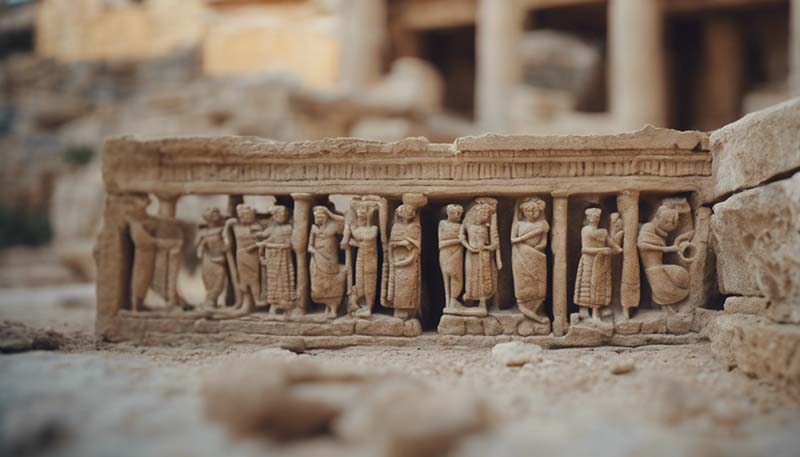The Minoans: Unraveling the Secrets of Ancient Crete
Welcome to the exploration of the Minoan civilization, one of the most enigmatic and fascinating ancient cultures that flourished on the island of Crete during the Bronze Age. The Minoans are known for their significant contributions to art, architecture, and maritime trade, as well as their possible influence on Greek mythology and the formation of classical Greek civilization.
Early History and Settlements
The Minoan civilization emerged around 2600–2500 BCE, reaching its peak between 1900–1450 BCE before declining in the Late Bronze Age. The early Minoan settlements were characterized by their rural nature, with agriculture and farming dominating their economy. However, as the civilization developed, it shifted towards a more complex urban society.
Advertisement
The Minoan Palaces
One of the most distinctive features of the Minoan civilization was the construction of grand palaces, of which the Palace of Knossos is the most famous. These palaces were not only centers of administration but also religious and social hubs. They were designed with advanced architectural features for their time, including plumbing and large storage facilities.
Palace of Knossos
The Palace of Knossos, located near the modern city of Heraklion, is the largest and most elaborate of the Minoan palaces. It covers an area of over 20,000 square meters and was built with multiple levels, courtyards, and staircases. The palace's design is thought to have influenced later Greek architecture.
Other Notable Palaces
- Phaistos Palace: Known for its well-preserved ruins and the famous Phaistos Disc, an enigmatic artifact inscribed with a undeciphered script.
- Malia Palace: Situated on the north coast of Crete, it is renowned for its frescoed rooms and its proximity to the Minoan city of Malia.
- Katovatos-Kafkala Palace: This lesser-known palace has yielded significant archaeological finds, including pottery and stone carvings.
The Minoan Economy and Trade
The Minoans were skilled navigators and traders, with a strong economy that relied heavily on maritime commerce. They established trade routes across the Mediterranean, exchanging goods such as pottery, textiles, and metalwork for raw materials like copper, tin, and precious stones.
Art and Culture
Minoan art is renowned for its naturalism and vibrant use of color. The civilization produced exquisite frescoes, pottery, and sculptures that often depicted scenes from daily life, mythology, and religious rituals. The famous 'Snake Goddess' figurines are among the most iconic examples of Minoan art.

The Decline of the Minoans
The decline of the Minoan civilization is a subject of much debate among historians. A combination of natural disasters, such as earthquakes and volcanic eruptions, as well as possible invasions by the Mycenaeans or the Sea Peoples, may have contributed to the civilization's downfall.
Legacy and Influence
The Minoans left a lasting legacy that can be seen in the art, architecture, and mythology of later Greek civilizations. Their advanced society and rich culture continue to captivate modern audiences, and their secrets are still being unraveled through ongoing archaeological research.
Further Reading:
- Dickinson, O. T. P. K. (1994). The Aegean Bronze Age. Cambridge University Press.
- Watrous, L. V. (1996). The Aegean and the Orient in the Second Millennium. Department of Classics, University of Cincinnati.
- Rehak, P., & Younger, J. G. (1998). Review of Aegean Prehistory II: The Prepalatial Bronze Age of the Southern and Central Greek Mainland. American School of Classical Studies at Athens.
Comments